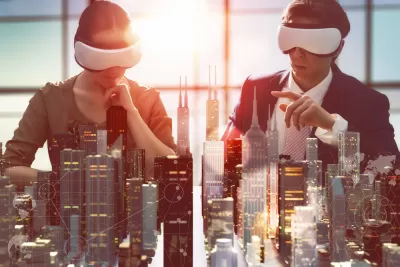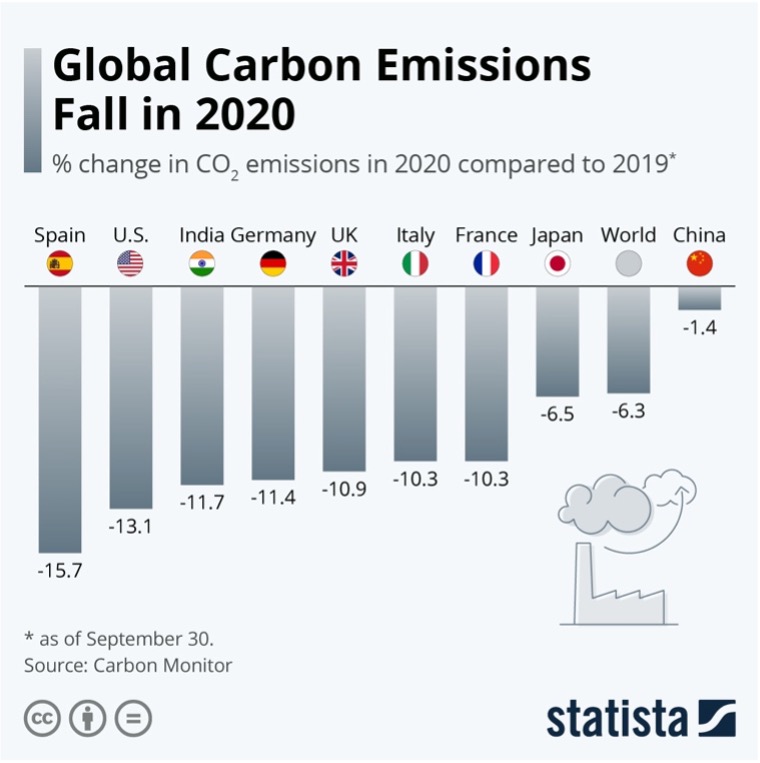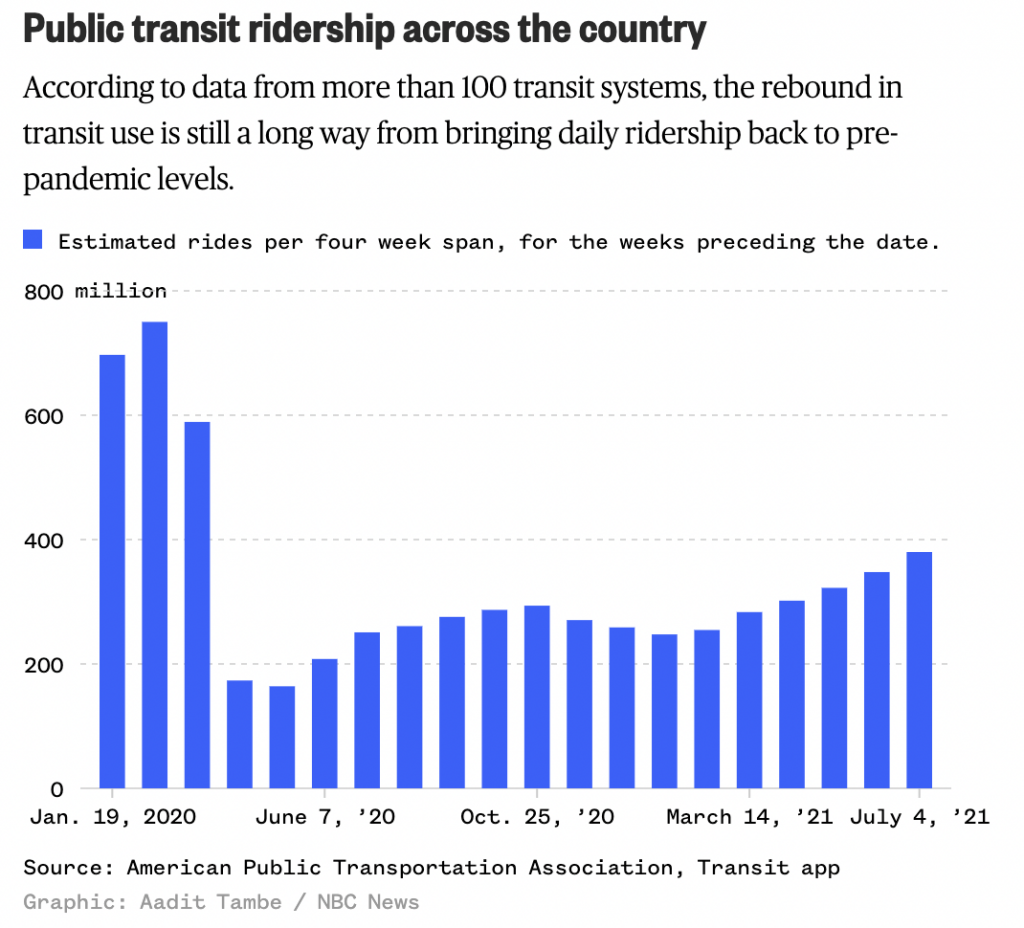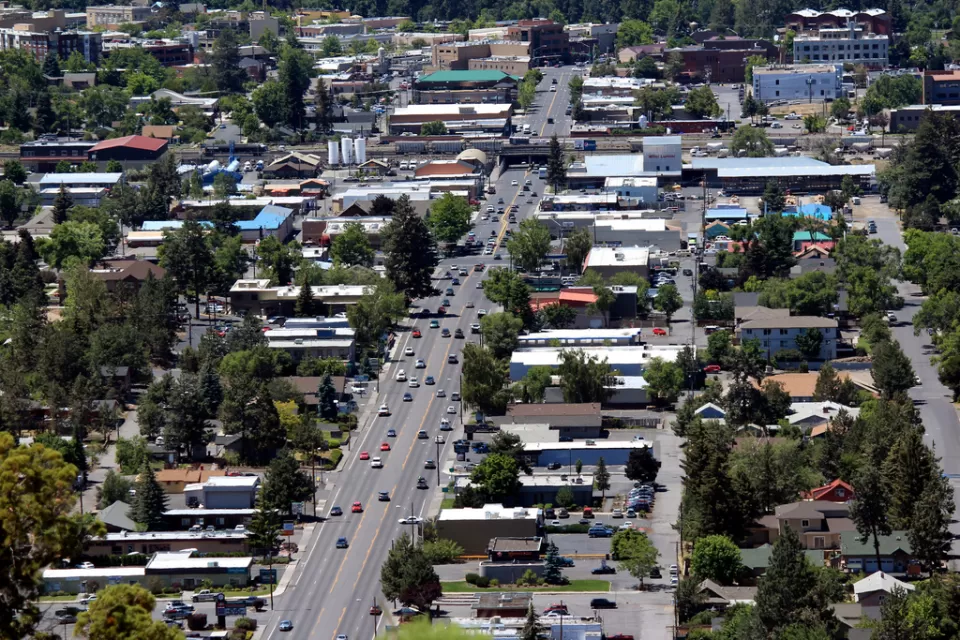The metaverse is expected to revolutionize the remote and hybrid workplace. But for cities whose municipal services rely on property and sales taxes, and even urban transit revenue, remote work could spell potentially long-term trouble.

If you attended the 2022 Consumer Electronics Show (CES) in Vegas earlier this month, then you know that the metaverse was omnipresent. One could hardly walk ten feet without tripping over companies displaying their virtual and augmented reality technology, which will act as the digital bricks and mortar of the metaverse.
Facebook may have lit the metaverse fuse in October when it rebranded to Meta Platforms, a move many dismissed as a cheap attempt at corporate rebranding, but now it is clear: every major tech company, including Google, Microsoft, Intel, Qualcomm, Nvidia, and countless shiny new startups you’ve never heard of, are gearing up for their own mega, meta, fireworks show.
Described as a sort of 3D sequel to today's two-dimensional Internet, the metaverse is where users will work, play, buy, and sell inside immersive virtual worlds.
Admittedly, hype is the water in which tech companies swim, and not every Silicon Valley brain wave is destined to succeed. But to stop the analysis there would be a mistake, warns a November article from the Economist, aptly titled “Don’t Mock the Metaverse.”
This leads to an important question: how much attention should urban planners, and city officials in general, commit to understanding and preparing for this technology?
The answer: a lot.
...every major tech company, including Google, Microsoft, Intel, Qualcomm, Nvidia, and countless shiny new startups you’ve never heard of, are gearing up for their own mega, meta, fireworks show.
Why? For this simple reason: the metaverse is projected to revolutionize the remote and hybrid workplace in the coming decade. If there is one thing we learned this pandemic, it’s the sweeping impact remote work can have on a city, from the environment to transit ridership and even to real estate markets. For cities whose municipal services rely on property taxes, sales taxes, and urban transit revenue, remote work could spell potentially long-term troubles.
Metaverse: Zoom on Steroids
Google “metaverse in the workplace” and predictions abound. It doesn’t take long, however, to recognize consensus on two fronts.
First, remote work is here to stay. The number of remote workers is expected to nearly double in the next five years—from 16.8 million workers before Covid hit, to 36.2 million Americans by 2025.
It makes sense. Since the pandemic, worker satisfaction increased—attrition rates were cut by 50% according to one study by Stanford—and productivity also improved. Great Place to Work compared employee productivity from March to August of 2020, the first six months of stay-at-home orders, to the same six-month stretch in 2019. Remote work productivity was stable or increased when working remotely from home, according to their two-year study of 800,000 employees.
Second, the metaverse is expected to enable, perhaps even accelerate, the growth in remote work.
If the 2020 remote revolution was made possible by platforms like Zoom, which no doubt enabled collaboration at distance and across time differences, then the next leap in remote work will be made possible by virtual and augmented reality, the building blocks of the metaverse.
In simpler terms, the metaverse will be Zoom on steroids.
And there are no shortages of promises about the metaverse’s potential to not only increase connection and collaboration, but also upgrade training techniques, lead to more efficient product development, and even innovate marketing practices.
Take employee training, for instance. AllWork.Space, an online publication about the future of work, reports that VR is projected to be used in 23 million jobs worldwide in the next decade—thus humanity’s entrance into the metaverse—and this tech could reduce staff training time by up to 60%.
Virtual reality has been used for training purposes for decades by soldiers, doctors and even astronauts, AllWork.Space notes. But more recently it has been applied in training employees working in other industries, such as retail, logistics, and customer service, who get to practice scenarios using VR headsets.
No doubt these early predictions are flawed. But if remote work is here to stay, and even a fraction of the promise of the metaverse is delivered, not only will your experience at work be different, but your city and neighborhood will also look and feel different too.
Impact of Remote Work on Cities
By the time 48.7 million Americans—about 35% of workers—retreated home to download Zoom in the early months of the pandemic, almost overnight many cities were hardly recognizable.
Start with the environment. According to C40, a group of about 100 cities committed to addressing climate change, the transportation sector accounts for one-third of a city’s CO2 emissions, more than all other sectors, including heating and energy, industry, and waste management. And most of those emissions are generated by commuters going to and from work.
So, no surprise that the sharp decline in vehicle transportation that began with lockdowns in March 2020 led to a 13% decline in U.S. carbon emissions that year.

Clean air and easier breathing weren’t the only impact remote work had on cities. With workers free to work from any zip code, and as organizations shifted from a location-centric culture to a human-centered culture, the ripple effect was felt in the real estate market as well.
The number of net new households that moved to the suburbs grew 43 percent in 2020, according to data from the Wall Street Journal, compared to 2019. And migration out of “pricey coastal cities” resulted in above-average decline in home values and rents in cities like New York, San Francisco, and Washington, D.C., according to reporting by the Atlantic.
As if empty urban centers and a sudden loss of tax revenue wasn’t enough, the overall decrease in mobility led to a dramatic drop in transit ridership on the nation’s bus and rail networks, forcing city budgets to step in and defray the costs. And revenue shortfalls persist. As of late October 2021, national transit ridership was only about 62% of what it was pre-pandemic, according to the American Public Transportation Association.

The potential long-term impact of declining property taxes, sales taxes, and urban transit revenue is noteworthy. The National League of Cities warns that cities, towns, and villages can expect to face a $360 billion budget shortfall from 2020 through 2022. This could have serious consequences, as states and local governments are responsible for the bulk of U.S. education and infrastructure spending, supplying nearly 80 percent of the $441 billion spent nationally on transportation and water infrastructure, according to the Congressional Budget Office’s 2021 data. And unlike the federal government, local governments have few options for dealing with budget crises, which is why the federal government has had to step in and provide aid.
Cities Beware
One of the most important roles of a city government is to understand how emerging technologies could impact the shape and feel of their community.
It’s one reason, for instance, cities are scrambling to understand the potential impact of autonomous vehicles (AVs). Will they require new infrastructure to operate safely? Will they add to or reduce congestion? Important questions, among many, many others.
But in the fast-paced world of tech, AVs are so 2017. In 2021, one must add an ‘R’ to remain on the cutting edge. What you get is AVR, or Augmented and Virtual Reality—the figurative building blocks of the metaverse.
And if the projections are at all correct—a doubling of remote workers this decade made possible by technologies like AVR and the metaverse—then it’s time to start asking questions.
How has remote work affected your city’s revenue streams and capacity to provide municipal services? If remote workers double, how would your infrastructure, like roads, housing, energy, and broadband, need to adapt? Local government is currently responsible for workplace health and safety inspections. What role should local government play in enforcing a safe and healthy workplace in the metaverse?
And, oh yeah, how will you customize your metaverse avatar?

Maui's Vacation Rental Debate Turns Ugly
Verbal attacks, misinformation campaigns and fistfights plague a high-stakes debate to convert thousands of vacation rentals into long-term housing.

Planetizen Federal Action Tracker
A weekly monitor of how Trump’s orders and actions are impacting planners and planning in America.

San Francisco Suspends Traffic Calming Amidst Record Deaths
Citing “a challenging fiscal landscape,” the city will cease the program on the heels of 42 traffic deaths, including 24 pedestrians.

Bend, Oregon Zoning Reforms Prioritize Small-Scale Housing
The city altered its zoning code to allow multi-family housing and eliminated parking mandates citywide.

Amtrak Cutting Jobs, Funding to High-Speed Rail
The agency plans to cut 10 percent of its workforce and has confirmed it will not fund new high-speed rail projects.

LA Denies Basic Services to Unhoused Residents
The city has repeatedly failed to respond to requests for trash pickup at encampment sites, and eliminated a program that provided mobile showers and toilets.
Urban Design for Planners 1: Software Tools
This six-course series explores essential urban design concepts using open source software and equips planners with the tools they need to participate fully in the urban design process.
Planning for Universal Design
Learn the tools for implementing Universal Design in planning regulations.
planning NEXT
Appalachian Highlands Housing Partners
Mpact (founded as Rail~Volution)
City of Camden Redevelopment Agency
City of Astoria
City of Portland
City of Laramie


























